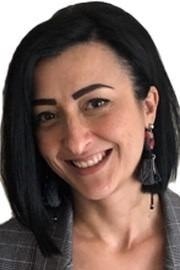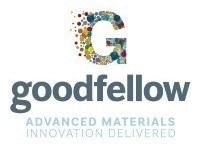In this interview, Dr. Aphrodite Tomou, Technical Manager at Goodfellow, talks to AZoM about the challenges often faced in R&D and Engineering research.
As the world progresses, science, engineering, and R&D will continue to progress, which means materials and material technology will need to continue to develop and innovate. How does Goodfellow keep up with the ever-changing market of research and development?
Bridging the Gap between R&D and Engineering
Goodfellow's greatest asset is its technical team, and I strongly believe that this is what distinguishes us from everyone else in the market. Goodfellow's technical team consists of researchers and engineers who have a great depth of knowledge of different material and industry sectors.
For example, we have expertise in metals, ceramics, polymers, and composite nanomaterials. We always try to provide the best solution possible according to our customers' requirements. Furthermore, we enhance our knowledge every day and keep it up to date by different workshops and conferences, including those of standing scientific journal papers.
By attending all these conferences, we are helping ourselves to foresee the future of materials and innovation. In doing this we are valuing our customers as it means we can help them out with their challenges by providing the best solutions to their problems.

Image Credit:Shutterstock/Bannafarsai_Stock
The bridge between R&D and engineering is often known as the ‘Valley of Death’. Can you explain why?
Nowadays, researchers are very occupied with patents, spin-off companies or collaborations in order to try and bring an innovative idea, material or application to the market.
The "valley of death" is a metaphor that is used for the stage between research-based innovation and commercialization in the marketplace. In general, researchers can face problems applying their idea and bringing them to a research lab in order to produce their materials. Bringing this new material to the marketplace is very difficult.
There is a big gap between these stages and sometimes this gap, or the "valley of death" as it is called, is jumped. However, sometimes researchers remain stuck inside it and cannot get their material to the market. There are different reasons why this can happen.
On early assessment, your idea may be a brilliant one, but it takes a lot more than that to bring it to the market. Researchers have to finalize and assess the costs of the idea and identify the production method as well as all of the machines or industries that are required to make the idea a reality in the marketplace. This process can take 5 to 10 years, and often it will never come to the marketplace, unfortunately.
However, organizations like Innovate UK and NASA are providing funding to researchers with start-up companies, and they want to interact and collaborate with bigger industries, including companies like Goodfellow. They are providing a road through funding so that these researchers can access the marketplace.
In this way, even though the "valley of death" is still an inhospitable place, there are organizations and industries that are helping researchers to bring their innovation to the marketplace. The gap has been minimized and nowadays I think that researchers are more willing to produce new ideas and bring them to the lab, and afterward to the market.

NASA is one of many organizations providing funding to researchers and start-up companies. Image Credit:ShutterstockVladi333
Large costs and timescales are one of the main challenges. How does Goodfellow overcome these?
One of the advantages that Goodfellow offers to our customers is that we can provide a very small amount of material where needed. This can be grams, millimeters, or 100 by 100 piece of product for example. We do not have a minimum order quantity. Regarding the timescale, we have a huge amount of stock and providing that we have the required product in stock it will be delivered within 48 hours.
How does Goodfellow bridge the gap between R&D and Engineering?
Goodfellow is a nest of innovative materials. We are very interested in new ideas, new technologies, and innovative materials, and we are trying to find partners and collaborate with them to bring these new ideas into the market.
We are trying to provide every possible solution for researchers, and we are bridging the gap by commercializing new materials and helping start-up companies or researchers in the lab by providing the needed quantity of materials in a cost and time-effective way.
Goodfellow can supply and produce custom-made materials and custom-made products. For example, we can supply custom-made alloys or bespoke components in many materials according to our customer's specifications.
This includes innovative materials. For example, we can provide bespoke complex ceramic components. We also offer metal nanoparticles in different sizes and shapes. Goodfellow recognizes that 3D printing is the future and can provide bespoke gas atomized spherical particles of different alloys and metals. For more complex inquiries, the technical team and the production team work closely together to provide the most suitable material for customers’ requirements.
What role will Goodfellow play in R&D and engineering in the future?
At Goodfellow, we remain the leading global supplier of high purity, high quality, and innovative materials. We will continue to value and enhance our partnerships with academic researchers in the industry in order to provide the best solutions to their challenges and to help achieve their goals.
About Dr. Aphrodite Tomou
Aphrodite is the Technical Manager of Goodfellow Cambridge Ltd, a leading global supplier of materials for research, innovation and development in science and industry sectors. Goodfellow has an extensive range of products, which are monitored and enhanced by Aphrodite and her team. Aphrodite has a diverse background and wide-ranging knowledge of materials, from nanomaterials to metals, ceramics and glass.
She holds a PhD and Masters in materials science and engineering, has published several papers in peer-reviewed international journals, and presented at international conferences as an invited speaker. Her team consists of scientists and engineers having expertise in various material areas and processes. Together, Aphrodite and the Technical team assist researchers and engineers, on a day-to-day basis, in finding solutions to even the most challenging of research problems.
About Goodfellow

Goodfellow supplies metals, ceramics and other materials to meet the research, development and specialist production requirements of science and industry worldwide.
The Goodfellow group consists of four companies. The main administration, research laboratories and workshops are located at the Company's headquarters in Cambridge, England. The subsidiary offices in America, France and Germany provide an additional service.
Disclaimer: The views expressed here are those of the interviewee and do not necessarily represent the views of AZoM.com Limited (T/A) AZoNetwork, the owner and operator of this website. This disclaimer forms part of the Terms and Conditions of use of this website.